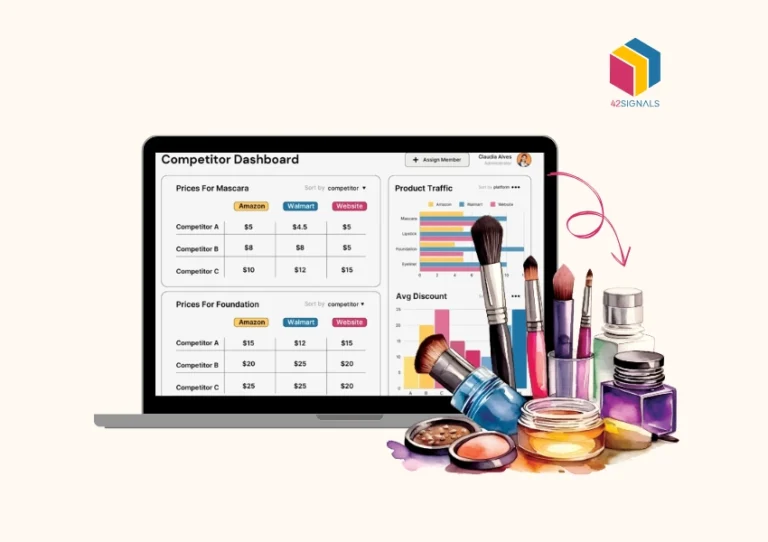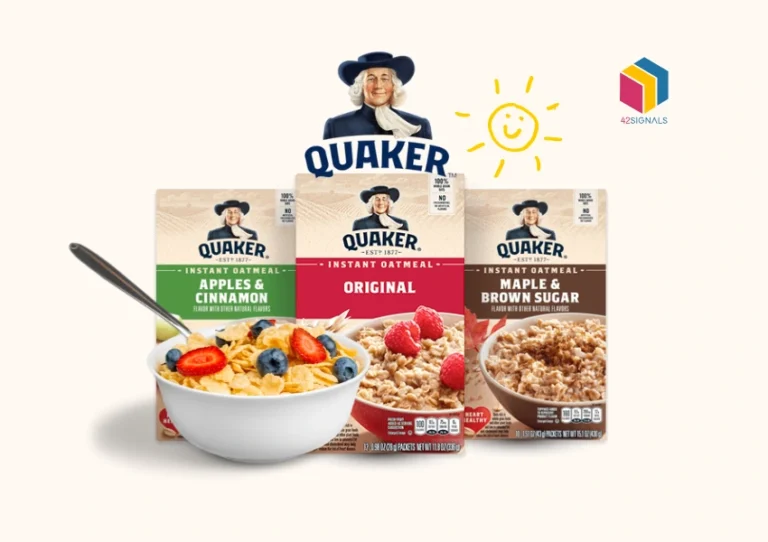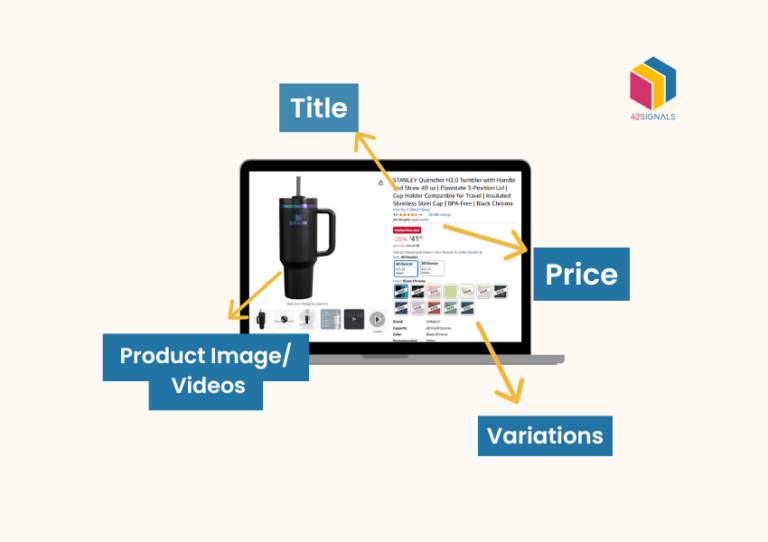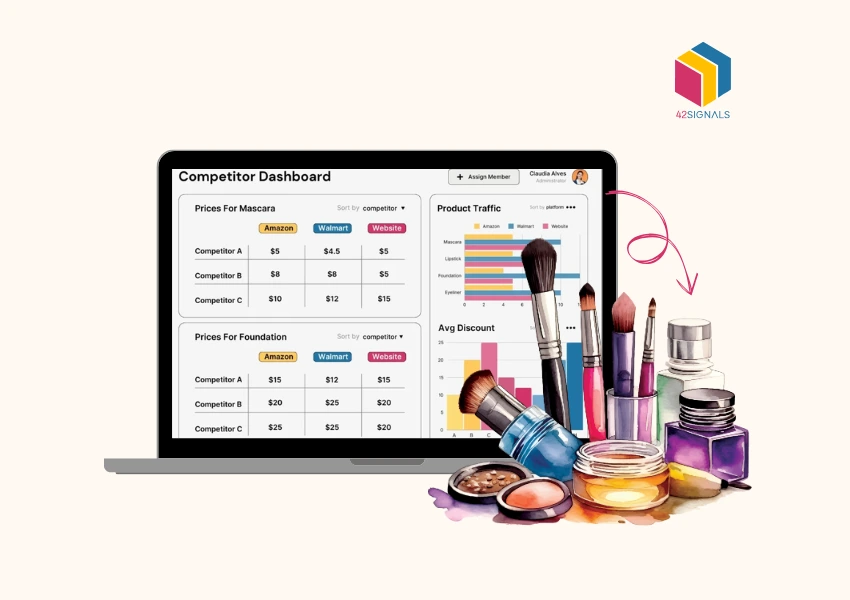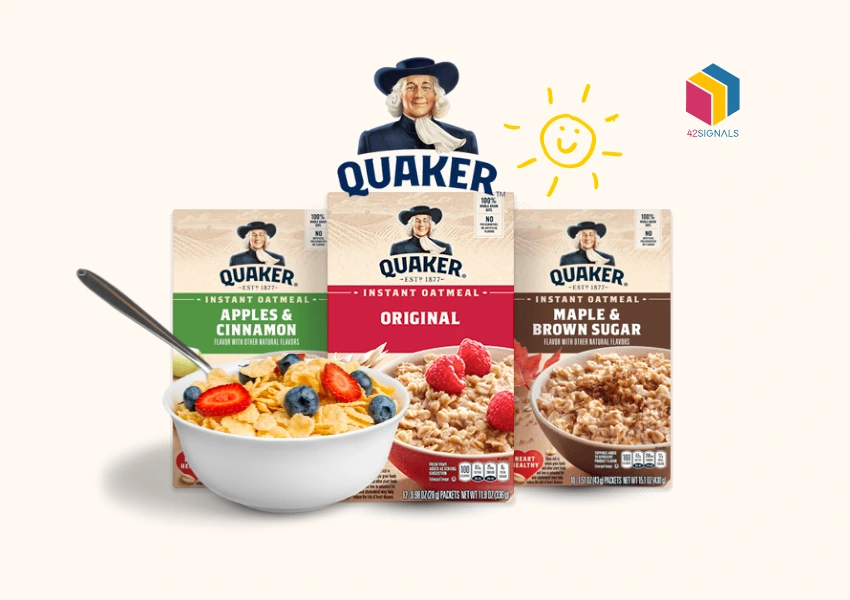Amazon Prime Day has become one of the most anticipated shopping events in the e-commerce calendar. As Amazon Prime members eagerly await deals on a vast range of products, sellers on the platform have an unparalleled opportunity to drive massive traffic and sales. But to make the most of Amazon Prime shopping sale day, sellers need to optimize their product listings well in advance.
With millions of items available on Amazon Prime shopping online, a well-prepared and optimized listing can be the difference between a record-breaking sales day and lost opportunities.
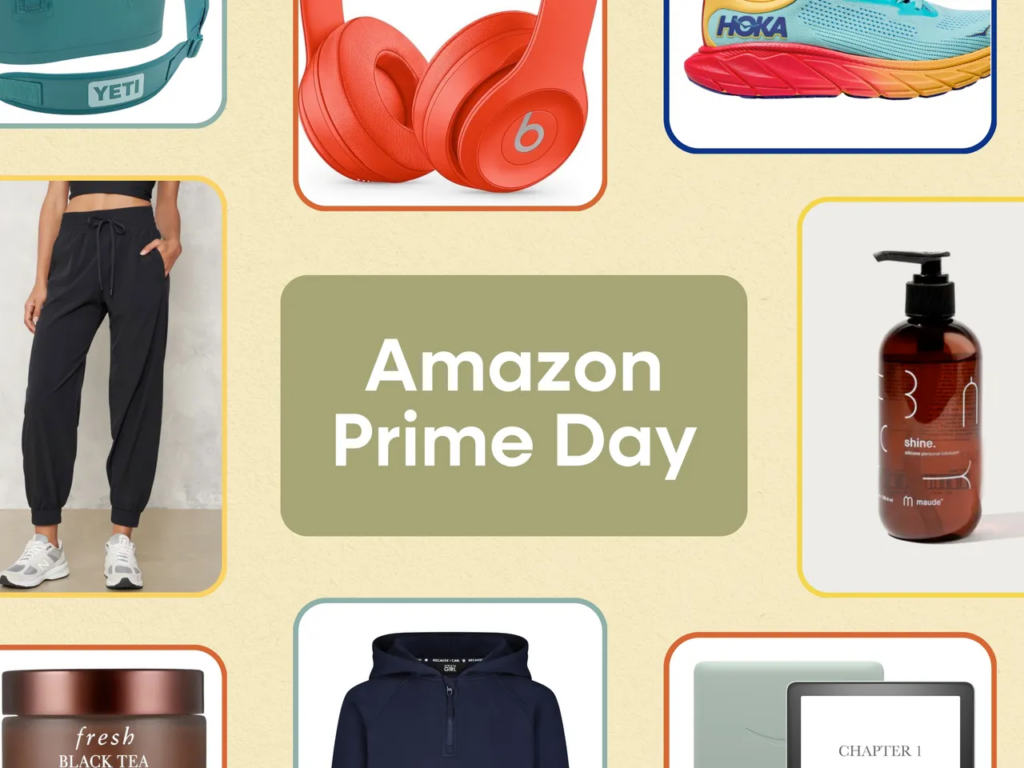
Image Source: Self
Here’s a guide on how to enhance your Amazon product listings to ensure maximum visibility, traffic, and conversion for the Amazon Prime shopping sale.
How to Gain Maximum Visibility on Amazon Prime Shopping Sale?
1. Use Product Data and Analytics for Strategic Adjustments
The best way to start optimizing is by analyzing performance data and tracking buyer behavior. These insights reveal patterns and trends that help you make strategic adjustments to your listings.

Image Source: The Product Manager
Tools like Amazon Brand Analytics or 42Signals’ digital shelf analytics can provide valuable information on keyword trends, product searches, and competitive rankings.
Past sales data can be particularly helpful, especially if you look at metrics from previous Prime Day events or other peak shopping seasons.
For example, which keywords saw high search volumes? Which listings attracted more clicks and conversions?
Understanding these factors can help you determine where to focus your improvements, whether on titles, images, or keywords.
2. Craft Product Titles for Maximum Visibility
Your product title is critical to both capturing attention and ranking in Amazon’s search results. To optimize it effectively, focus on keywords and clarity.
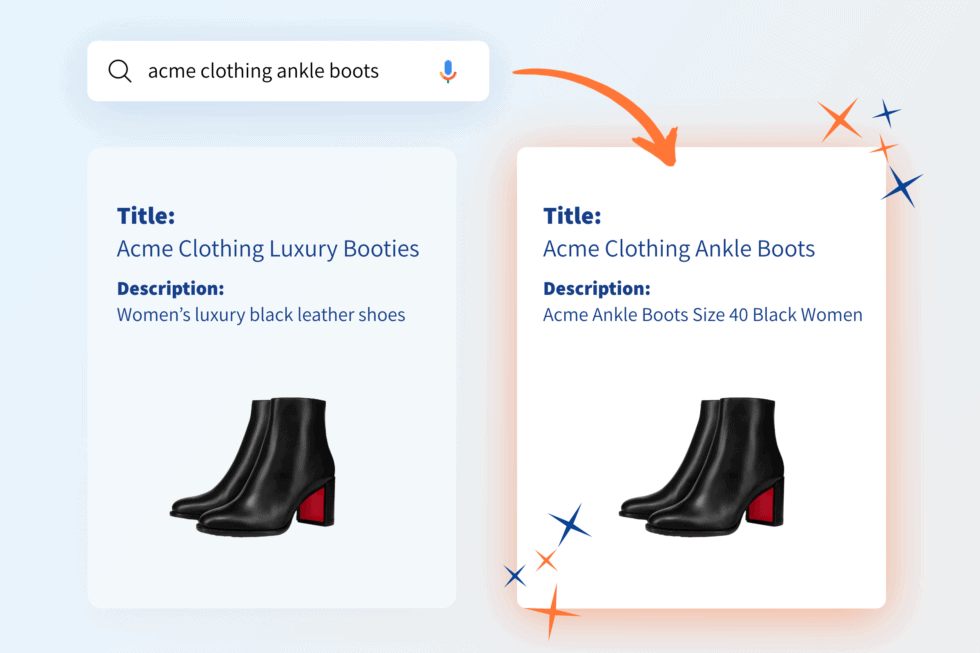
Image Source: High Street
Include primary search terms that are directly relevant to your product, such as “Amazon Prime Day deals” or specific product descriptors, but avoid overloading the title with keywords. Amazon’s algorithm rewards clear and direct titles, so consider a balance between being informative and concise.
For example, a title like “Noise-Canceling Wireless Headphones with 30-Hour Battery Life” offers clear information on product type and key features. When creating a title, prioritize readability for the user while ensuring your essential keywords are present.
3. Optimize Product Descriptions for Conversions Before Amazon Prime Shopping Sale
Your product description is where you have the space to share more detailed information and persuade potential customers.

Image Source: The Good
This section should answer common questions, highlight unique selling points, and build trust with potential buyers.
- Focus on Benefits: Instead of listing product specifications alone, explain how those features benefit the buyer. For instance, instead of simply saying “waterproof material,” adding that the “waterproof design keeps items protected in any weather.”
- Bullet Points for Key Features: Use bullet points to highlight essential information, especially if you have a list of benefits to share. Start each bullet with a keyword or brief description, such as “LONG BATTERY LIFE – 30 hours of uninterrupted use” to capture attention quickly.
- Mention Prime Day Benefits: Prime Day brings a sense of urgency, and subtle language like “limited-time discount” or “exclusive Prime Day offer” can encourage quicker purchasing decisions.
Strong descriptions build trust, answer questions, and provide reassurance, ultimately increasing the chances of conversion during high-traffic events like Amazon Prime shopping sales.
4. Use High-Quality Images and Videos to Showcase Your Product
In online shopping, images serve as a powerful tool to convey the quality and usability of your product. During Prime Day, high-quality visuals are essential to capture attention in crowded search results and keep shoppers on your listing.
- Use High-Resolution Images: Amazon requires images to be at least 1,000 pixels on the longest side. This enables zoom functionality, allowing shoppers to see details and get a closer look at the product.
- Showcase Multiple Angles and Usage: Include images that show your product from multiple perspectives. This helps customers visualize the product fully. Including context images, where the product is shown in real-life settings, adds further appeal.
- Leverage Video Content: Videos allow you to show the product’s features in action, which can be especially persuasive. Demonstrating the product in use can help answer questions and boost confidence in the purchase.
Visuals should communicate quality, utility, and appeal, helping your listing attract clicks and conversions.
5. Optimize Backend Keywords for Amazon Prime Shopping Sales

While backend keywords aren’t visible on the product page, they play a significant role in share of search, ranking, and visibility. These keywords help your listing appear in more relevant search results.
- Add Relevant Search Terms: Include keywords that may not have fit in the title or description but are relevant to your product. This could be synonyms, alternate terms, or popular misspellings.
- Avoid Repetition: Repeating keywords from the title or description isn’t necessary, as Amazon’s algorithm already indexes those terms. Instead, focus on adding terms that add value to your listing.
- Think from a Buyer’s Perspective: Consider what shoppers might search for beyond the obvious. Keyword tools can help you identify related terms with good search volume.
Backend keywords are an opportunity to widen your listing’s visibility without cluttering the main content of the page.
6. Price Competitively
During Prime Day, price is often a major consideration for shoppers. With an During Prime Day’s frenzy, price isn’t just *a* factor – it’s often the deciding factor. Shoppers are flooded with deals, and standing out requires razor-sharp pricing intelligence and compelling offers. Here’s how to compete effectively:
- Relentless Competitor Tracking: Don’t just research once. Use Amazon tools (like the Brand Analytics pricing dashboard if eligible), third-party price tracking software (e.g., Keepa, Jungle Scout), and manual checks to monitor key competitor prices in real-time leading up to and during Prime Day. Price shifts happen in minutes. Identify your target position: premium value leader, aggressive discounter, or strong middle-ground contender.
- Strategic Discounting & Coupon Power:
- Prime Visibility: Discounts and coupons are golden. They appear directly in search results (with strikethrough pricing and “% off” badges) and in the “Today’s Deals” section, instantly signaling value to deal hunters.
- Psychological Edge: Frame discounts effectively (e.g., “50% Off” vs. “$10 Off”). Consider charm pricing (ending in .99) even on discounted amounts.
- Urgency Driver: Highlight limited-time offers explicitly (“Prime Day Only!”). Coupons create a small psychological barrier (clicking to clip), increasing perceived value and purchase intent.
- Leverage Lightning Deals for Explosive Visibility:
- Prime Placement: Lightning Deals feature prominently on the Amazon Prime Day event page, deal hubs, and often in email alerts, offering unmatched exposure.
- Scarcity & Urgency: The countdown timer and limited quantity fuel impulse purchases. Shoppers fear missing out (FOMO).
- Investment vs. ROI: While there is a cost (usually a referral fee percentage), the potential for a massive sales velocity spike, clearing inventory, and capturing new customers (especially with follow-up remarketing) often justifies it. Apply early! Slots are limited and competitive.
- Crucial: Ensure you have sufficient inventory to meet the anticipated surge and avoid penalties for running out. The discount must be significant (typically at least 20% off the 30-day low).
- Beyond the Base Price: Value Perception: Competitive pricing isn’t always the lowest price. Ensure your product imagery is stellar, your bullet points scream value, and your reviews are strong. A slightly higher price can be justified if the perceived value is significantly higher.
- MAP Policy Adherence (If Applicable): If your brand has Minimum Advertised Price (MAP) policies, Prime Day is a critical enforcement period. Competitive pricing within your MAP guidelines is essential. Monitor unauthorized sellers aggressively. (Note: This subtly links back to your core title theme of reputation/protection).
- Goal Alignment: Align your pricing strategy with your Prime Day goals. Is it clearing old stock? Acquiring new customers? Boosting overall revenue? Your pricing tactics (deep discount vs. moderate coupon) should reflect this.
Why This Wins on Prime Day: Competitive pricing, amplified by visible discounts and Lightning Deals, ensures your product doesn’t get lost in the noise. It directly influences your placement in deal listings and search results, putting your offer squarely in front of motivated, price-sensitive shoppers actively looking to buy now. This strategic approach protects your sales velocity and maximizes your Prime Day ROI.
7. Attract External Traffic
Amazon rewards listings that generate external traffic with improved ranking, and Amazon Prime shopping sale day is an ideal time to attract shoppers from outside the platform.
Consider using social media, email marketing, or influencer partnerships to drive additional traffic to your Amazon listings.
- Social Media Marketing: Platforms like Instagram, Facebook, and TikTok can be effective in promoting your Prime Day deals, particularly if you have a relevant audience. Paid ads increase your reach, but organic posts and stories can also help.
- Email Campaigns: If you have a list of past customers or subscribers, send a reminder about your Prime Day offers. Include links to your listings and a clear call to action to encourage purchases.
- Influencer Collaborations: Collaborating with influencers who align with your product’s target audience can bring credibility and new traffic to your listings. Their endorsement can be effective in building trust with shoppers unfamiliar with your brand.
Bringing in external traffic can lead to more sales and improve the ranking of your listing, especially during a high-visibility event like Prime Day.
8. Manage Inventory and Plan for Fulfillment
Inventory planning is crucial to ensure you don’t run out of stock on Prime Day. Running out of stock on a high-demand day can mean missed sales and lost ranking, so it’s essential to assess demand and stock accordingly.

- Forecast Sales Based on Past Data: Use data from previous Prime Days or other peak sales periods to project demand. Many sellers find that Prime Day sales can exceed 2–3 times their typical daily numbers, so plan stock levels with that in mind.
- Consider FBA: Amazon’s Fulfillment by Amazon (FBA) program offers Prime shipping benefits and faster delivery, which most Prime members expect. If feasible, enroll your products in FBA to streamline fulfillment.
- Monitor Stock Levels: During the sale, keep a close eye on your inventory. If a product is selling faster than anticipated, you may need to make adjustments, such as temporarily increasing the price, to prevent stockouts.
Adequate inventory planning helps maintain momentum during Amazon Prime shopping sale day, allowing you to capture more sales without interruptions.
Wrapping Up
Optimizing Amazon product listings for Amazon Prime shopping sales can have a tremendous impact on sales and customer engagement.
By focusing on high-quality product titles, engaging descriptions, appealing visuals, and strategic pricing, you can help ensure your listings attract and convert more visitors.
Combining these optimizations with strong inventory management and external traffic efforts puts you in the best position to make the most of Prime Day’s potential.If you are curious to know how 42Signals can improve your product listings data and optimize your online shelves, schedule a demo with us today.
Frequently Asked Questions on Amazon Prime Shopping Sale
What is Amazon Prime Sale Day?
Amazon Prime Sale Day refers to exclusive shopping events available only to Amazon Prime members, offering significant discounts across categories like electronics, home, fashion, beauty, and more. The most well-known is Amazon Prime Day, usually held once a year in July, though Amazon sometimes hosts additional events like:
- Prime Early Access Sale (Fall)
- Prime Big Deal Days
- Prime Holiday Deals (pre-Black Friday events)
These sales often feature lightning deals, limited-time discounts, and early access to popular products. To participate, you must have an active Amazon Prime membership.
How do you get a 50% discount on Amazon?
While Amazon doesn’t offer a blanket 50% off across the site, here are legitimate ways to score up to 50% (or more) in savings:
- Wait for Prime Day or major sales – Many items are heavily discounted during big events.
- Use Amazon Coupons – Available directly on product pages (look for the green “coupon” box).
- Subscribe & Save – Offers up to 15% off recurring purchases on eligible items.
- Amazon Warehouse – Get discounted, open-box, or used items.
- Lightning Deals – Time-limited offers that often include deep discounts.
- Student or EBT discounts on Prime – Save 50% on Prime membership, unlocking access to deals.
- Check promotions with credit cards – Some cards offer extra cash back or instant discounts on Amazon.
You can also install tools like Honey or Keepa to track price drops and identify when an item hits its lowest price point.

